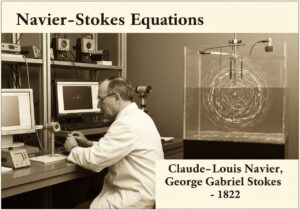A non-destructive testing méthode that is used to detect and analyze stress and microstructural changes in ferromagnetic materials.
- Méthodologies : Ingénierie, Qualité
Essais de Barkhausen

Essais de Barkhausen
- Analyse des modes de défaillance et de leurs effets (AMDEC), Matériels, Propriétés mécaniques, Métaux, Contrôle non destructif (CND), Contrôle de qualité, Gestion de la qualité, Corrosion sous contrainte, Ingénierie des structures
Objectif :
Comment il est utilisé :
- Barkhausen testing is based on the Barkhausen effect, which is the phenomenon of a series of sudden changes in the magnetization of a ferromagnetic material when the magnetizing force is changed.
Avantages
- Is a non-destructive testing method, is sensitive to changes in stress and microstructure, and can be used to test a wide range of ferromagnetic materials.
Inconvénients
- Can be affected by a number of factors, such as temperature and surface condition, requires a skilled operator to interpret the results, and may not be suitable for all types of ferromagnetic materials.
Catégories :
- Ingénierie, Fabrication, Qualité
Idéal pour :
- Detecting and analyzing stress and microstructural changes in ferromagnetic materials.
Barkhausen Testing, rooted in the principles of magnetization changes within ferromagnetic materials, finds extensive applications across industries such as aerospace, automotive, and manufacturing, where the integrity of components is paramount. This methodology is particularly suited for the evaluation of fatigue and residual stress in critical parts like gears, shafts, and structural components, often employed during the quality assurance phase of production or during maintenance inspections. It is commonly initiated by materials engineers or quality assurance specialists who seek to assess the mechanical properties or performance history of a component without compromising its usability. The participation of cross-functional teams, including design engineers and metallurgists, can enhance the effectiveness of the testing process, as they provide context on the material properties and intended applications. Barkhausen Testing can also serve as a valuable tool in research and development settings, allowing for advanced analysis of new materials and enabling iterative design processes. This method is compatible with various testing environments, including in-situ examinations and laboratory investigations, providing flexibility in how and where assessments are conducted. The sensitivity of Barkhausen noise measurements to microstructural changes offers an avenue for predictive maintenance strategies, as shifts in material conditions can be monitored over time, leading to more proactive approaches in asset management.
Principales étapes de cette méthodologie
- Calibrate the Barkhausen noise measurement system to ensure accurate detection and analysis.
- Apply a variable magnetic field to the ferromagnetic material under investigation.
- Monitor the Barkhausen effect signals generated during the application of the magnetic field.
- Analyze the characteristics of the Barkhausen noise, paying attention to amplitude and frequency changes.
- Relate the observed changes in Barkhausen noise to stress and microstructural changes in the material.
- Validate the findings through comparison with known standards or additional testing methods.
Conseils de pro
- Integrate Barkhausen noise analysis with advanced traitement des signaux techniques like machine learning algorithms to enhance detection capabilities and interpretation accuracy of microstructural anomalies.
- Combine Barkhausen testing with complementary non-destructive methods, such as ultrasonic testing or eddy current testing, to obtain a comprehensive understanding of material conditions and improve reliability of results.
- Regularly calibrate and validate equipment against known standards to ensure measurement consistency and accuracy, particularly when analyzing variations in stress levels or microstructural changes in diverse ferromagnetic materials.
Lire et comparer plusieurs méthodologies, nous recommandons le
> Référentiel méthodologique étendu <
ainsi que plus de 400 autres méthodologies.
Vos commentaires sur cette méthodologie ou des informations supplémentaires sont les bienvenus sur le site web de la Commission européenne. section des commentaires ci-dessous ↓ , ainsi que toute idée ou lien en rapport avec l'ingénierie.
Contexte historique
1738
1757
1788
1800
1800
1800
1820
1687
1750
1788
1800
1800
1800
1810
1822
(si la date est inconnue ou n'est pas pertinente, par exemple "mécanique des fluides", une estimation arrondie de son émergence notable est fournie)















Articles Similaires
Questionnaires sur les troubles musculo-squelettiques
Tests à plusieurs variables (MVT)
Analyse de régression multiple
Systèmes de capture de mouvement
Méthode MoSCoW
Test de la médiane de Mood